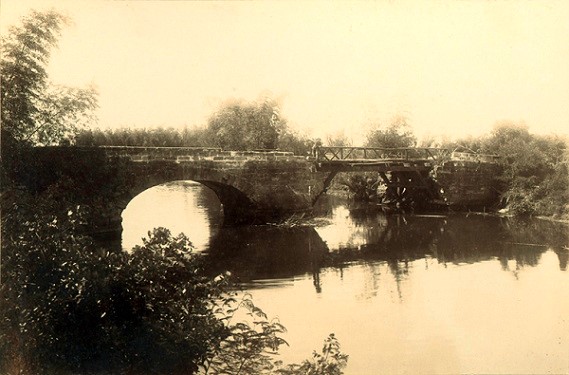
Bruno Mediate served in Company C of the 1st Wyoming Volunteer Infantry. He saw service with the regiment in the Philippines during the Spanish American War and the Philippine American War.
Biography:
Bruno Mediate was born in Cirella, Reggio Calabria, on September 17,
1876. It is not known when he emigrated to the United States but by the
1890s he lived in Cripple Creek, Colorado, where he worked as a miner.
However, he was a ranchman living in Wyoming when he enlisted in Company
C of the 1st Wyoming Volunteer Infantry on May 1, 1898. Mediate served
in the Philippines during the Spanish-American War and the beginning of
the Philippine-American War.
When calling for volunteers for the war with Spain, William Richards, the governor of Wyoming selected Companies C, F, G, and H, along with part of Company A, all from the 1st battalion of infantry to form an infantry battalion for federal service. Company C had been originally recruited from the area of Buffalo, Wyoming, in Johnson County. Beginning on May 2, 1898, the battalion moved to Camp Richards near the state fairgrounds in Cheyenne, Wyoming. Eight days later, those who were medically qualified were sworn into federal service for two years or unless they were no longer needed and were discharged earlier. Mediate, along with the remainder of the battalion, left Cheyenne on May 18, arriving at Camp Merritt, near San Francisco, California, three days later. There, he would have joined in drill and training with his comrades for the next month. Finally the battalion departed San Francisco aboard the transport OHIO on June 27, bound for the Philippines, where they arrived on July 31. The battalion disembarked in Manila Bay and proceeded to Camp Dewey on August 6. From there, they moved into the trenches outside of the city of Manila.
On August 13, the battalion took part in the capture of Manila. During
the initial, brief naval bombardment of the city, the battalion had
moved closer to Manila's walls. After the bombardment ceased, the
battalion moved into Manila in support of the 18th
U.S. Infantry. During the advance, the battalion came under fire
but were not in position to return fire. Unknown to Bruno Mediate and
his comrades, the fall of Manila was a staged event where the Philippine
forces had to show brief resistance before surrendering in order to save
face. The fall of the city was actually negotiated prior to the action.
The Spanish forces that Mediate faced were also unaware of this
agreement. The battalion continued its advance into the city until
fighting was halted by the end of the day. Also unknown to both sides in
the Philippines, the U.S. and Spain had agreed to an armistice on August
12 (already August 13 in the Philippines). The fighting had already
officially ended before the city was surrendered.
Falling the surrender of Manila the 1st Wyoming became part of the city’s garrison until February 4, 1899 when the guerilla war against the U.S.'s former de facto Filipino allies began.
In February and March, the battalion fought several engagements, including at San Pedro Macati where Company C lost two men mortally wounded. On July 6, the battalion received orders to prepare for their return to the United States. During its term of service, the battalion lost one man killed in action, two men mortally wounded, and ten men who died from disease. Mediate noted the following engagements on his application for membership in the United Spanish War Veterans: “Zapote Bridge, San Pedro Macelte [sic, Macati], and others.” He had survived and was unwounded.

U.S. Spanish American War Volunteers Index to Compiled Military
Service Records, 1898; Veterans Administration Master Index, 1917 -
9/16/1940, in Ancestry.com.
Mediate’s invalid and minor child’s pensions, National Archives
(copies in the author’s possession).
U.S. Veterans Administration Pension Payment Cards
Organization Index to Pension Files of Veterans Who Served Between
1861 and 1900, compiled 1949 - 1949, documenting the period 1861 – 1942
(National Archives), in Fold3.com.
Mediate’s date of birth varies slightly among the different records
Zapote River Bridge image source: "Zapote river bridge : Zapote river,
Cavite -- 1899; 388; 1899." In the digital collection Philippine
Photographs Digital Archive, Special Collections Research Center,
University of Michigan.
https://quod.lib.umich.edu/s/sclphilimg/x-388/phla091. University of
Michigan Library Digital Collections. Accessed August 18, 2024.